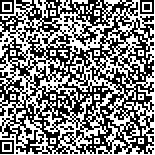| 引用本文: | 何英彬,姚艳敏,李建平,黄 青,陈佑启,陈仲新,杨 鹏,于士凯.大豆种植适宜性精细评价及种植合理性分析——以东北三省为例[J].中国农业资源与区划,2012,33(1):11~17 |
| |
|
| 本文已被:浏览 1564次 下载 1077次 |

码上扫一扫! |
|
|
| 大豆种植适宜性精细评价及种植合理性分析——以东北三省为例 |
|
何英彬1, 姚艳敏2, 李建平3, 黄 青2, 陈佑启2, 陈仲新2, 杨 鹏3, 于士凯2
|
|
1.农业部资源遥感与数字农业重点开放实验室,北京 100081/呼伦贝尔草原生态系统国家野外科学观测研究站,北京 100081/中国农业科学院农业资源与农业区划研究所,北京 100081;2.农业部资源遥感与数字农业重点开放实验室,北京 100081/中国农业科学院农业资源与农业区划研究所,北京 100081;3.中国农业科学院农业资源与农业区划研究所,北京 100081
|
|
| 摘要: |
| 该文建立了一套涵盖自然和经济影响因子的大豆适宜性评价指标体系,并以东北为例进行了适宜 性的研究;指标体系中不但考虑了温度、降水和日照气候3个要素在不同生长期对于大豆种植适宜性的影 响,还应用了基础设施、科技进步及农民意愿等社会经济因子评价大豆生长适宜性。在获取东北三省大豆 适宜性等级图的基础上,将其与东北三省实际大豆种植区域进行对比,结果发现:(1)东北三省大豆种植 适宜性属于中上水平,适宜区、中间等级区及非适宜区的面积分别为9.09万km 2 ,11.45万kkm 2 和7.99 万km 2 ,约占东北全境面积的11.5%, 14.49%和10.11%;(2)松嫩平原是最适合于大豆生长的区域,而 三江平原由于日照等因素并非大豆种植的绝佳地带;(3)通过对比计算,适宜区、中间等级区及非适宜区 与大豆实际种植区符合面积分别占大豆实际种植面积的24.78%, 46.30%和28.92%,而黑龙江省为 15.39%, 51.70%, 32.91%,说明黑龙江省大豆种植结构略欠合理。在研究结果基础上,建议农业及相关 部门在保护农民切身利益的情况下适当调整大豆种植的空间结构。 |
| 关键词: 种植适宜性 大豆 精细评价 指标体系 对比分析 东北三省 |
| DOI:10.7621/cjarrp.1005-9121.20120103 |
| 分类号: |
| 基金项目:国家自然科学基金青年基金(41001049);国家自然科学基金重点项目(40930101);全球变化研究国家重大科学研究计划973项目(2010CB951501-2);科技基础性工作专项(2007FY120100);中央级公益性科研院所基本科研业务费专项资金资助(2010-02) |
|
| PRECISELY ASSESSMENT ON SOYBEAN GROWTH SUITABILITY AND ANALYSIS ON ITS CULTIVATION REASONABILITY-TAKING THE NORTHEAST CHINA AS AN EXAMPLE |
|
He Yingbin1, Yao Yanmin2, Li Jianping3, Huang Qing2, Chen Youqi2, Chen Zhongxin2, Yang Peng3, Yu Shikai2
|
|
1.Key Laboratory of Resources Remote Sensing and Digital Agriculture of Chinese Ministry of Agriculture, Beijing 100081/Hulunber Grassland Ecosystem Observation and Research Station Beijing 100081/Institute of Agriculture Resources and Regional Planning, Chinese Academy of Agricultural Science, Beijing 100081;2.Key Laboratory of Resources Remote Sensing and Digital Agriculture of Chinese Ministry of Agriculture, Beijing 100081/Institute of Agriculture Resources and Regional Planning, Chinese Academy of Agricultural Science, Beijing 100081;3.Institute of Agriculture Resources and Regional Planning, Chinese Academy of Agricultural Science, Beijing 100081
|
| Abstract: |
| This paper established an integrated indicators system to map suitability for cultivating spring soybean in the northeast China. The indicators system not only involved biophysical and socio-economic factors(including infrastructure, scientific advancement and farmer's willingness), but also embodied the effects of temperature, pre- cipitation, and sunshine on the individual development stages of spring soybean life cycle. Comparing suitability map with practical growth map for spring soybean, this paper found where soybean cultivation in the study area needs to be adjusted. The findings of this study were:(1) the Northeast China was positioned in the middle and high level of the suitability scale for spring soybean growth. The suitable, mediate level, and unsuitable areas were approximately 9.09×10 4 km 2 , 11.45×10 4 km 2 and 7.99×10 4 km 2 , accounting for 11.5%, 14.49% and 10.11% of the total area of the Northeast China, respectively;(2) Meanwhile, the Songnen Plain was the most suitable place for spring soybean growth, but the Sanjiang Plain was not;(3) The suitable, mediate and unsuitable areas matching practical growth regions respectively accounted for 24.78%, 46.30% and 28.92% of the total soybean practical growth area. The soybean cultivation in Heilongjiang province was unreasonable since the same percenta- ges were 15.39%, 51.70%, 32.91%. Authors suggested that agricultural sector should duly adjust agricultural cultivation structure under the condition of guaranteeing farmers' benefit. |
| Key words: cultivation suitability spring soybean precisely assessment indicator system comparative analysis the Northeast China |

